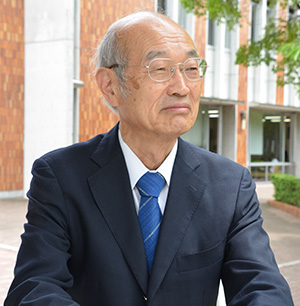On July 29th, while I was writing this article, a general election was held in the Kingdom of Cambodia, and according to the preliminary vote count on the day, as expected, the current ruling Cambodian People's Party, which outlawed the largest opposition party, won a landslide victory. The current Prime Minister, Hun Sen, will continue to be in charge of the government. I first visited Cambodia in August 1993, exactly 25 years ago. It was just after the general election was held under UN supervision, and Hun Sen was already the leader at that time. At that time, remnants of the Pol Pot faction were still active in some parts of Cambodia, and the areas around Siem Reap and Tonle Sap Lake, where the Angkor ruins are located, were considered dangerous, so I was unable to visit. However, by chance, I was able to make my long-awaited pilgrimage to Angkor last November.
For this reason, in this two-part series I would like to write about my humble experiences in Cambodia, a small country in Southeast Asia that is not often talked about in Japan.
Let's start with my first visit (August 1993).
The impetus for going to Cambodia was the passage of the PKO (Peace Keeping Operation) Cooperation Law (Law Concerning Cooperation with United Nations Peacekeeping Operations, etc.) the previous year in 1992. This law made it possible for the Self-Defense Forces to participate in peacekeeping operations overseas conducted by the United Nations, and Cambodia was the first place the Self-Defense Forces were sent to. At the time, Cambodia's civil war had finally come to an end, and it had been decided that the country's first general election would be held under the supervision of the United Nations. This was truly a peacekeeping operation by the United Nations. The Ground Self-Defense Forces were dispatched to take part in this operation in September 1992.
At the time, I was serving as a member of the government's Council for Overseas Economic Cooperation (an advisory body to the Prime Minister). The government requested that the Council inspect the activities of the Japan Ground Self-Defense Forces in Cambodia. Two members, including myself, were sent there.
First, I flew into Phnom Penh, the capital of Cambodia, from Hanoi, Vietnam. I was surprised to see a large skull and crossbones at the airport as a warning against the countless landmines that had been planted during the civil war. In fact, when I entered the city, I noticed a large number of people with disabilities, including children. Most of the people I met there said that they had family members who had been killed under the Pol Pot regime and that they were survivors. The total number of victims is still unclear, but some estimate that 1.5 to 2 million people, or one in four of the population, were killed. At a place called "Killing Hill," there was a monument with countless skeletons piled up. Anyway, I felt like I had caught a glimpse of a miserable state that is unimaginable in peaceful Japan. I remember a government official in charge of economic planning lamenting, "We can't even pay our civil servants' salaries tomorrow."
The Self-Defense Forces base was located in a town called Takeo, about two and a half hours drive south from the capital, Phnom Penh. We drove in an embassy car along a rough road through the countryside, but I remember feeling relieved when a white jeep flying the UN flag came to pick us up.
The Japan Ground Self-Defense Forces' dispatched unit was an engineering battalion, whose mission was to repair roads and bridges damaged by the civil war so that Cambodian citizens could travel safely to the polling stations. High-ranking officials of the Cambodian government highly praised the work of the Japanese Self-Defense Forces.
25 years have passed since then. In the next issue, I would like to think about Cambodia today while introducing the research group at Sophia University that has been restoring Angkor Wat for over 40 years.
(July 28, 2018 diary)

[Profile of Shigeo Uchida]
Born in 1941. Graduated from the Faculty of Economics at Keio University in 1965 and joined the Nihon Keizai Shimbun. After working in the Securities Department of the Editorial Department, the Japan Center for Economic Research, head of the Securities Department at the Tokyo Head Office and as an editorial writer, he is currently Managing Director the Chiba Gakuen School Corporation and Professor Emeritus Chiba University of Commerce.
<Major publications>
"Seminar: Introduction to the Japanese Economy" (co-author, Nihon Keizai Shimbun)
"Showa Economic History (Part 2)" (co-author, Nihon Keizai Shimbun)
"The New Japanese Economy" (co-author, Nihon Keizai Shimbun)
"History of Japanese Securities 3" and "Now You Can Understand! How the Japanese Economy Works" (sole author, Nihon Keizai Shimbun, Inc.)
"New Introduction to the Japanese Economy" (co-author, Nikkei Publishing Inc.) and others